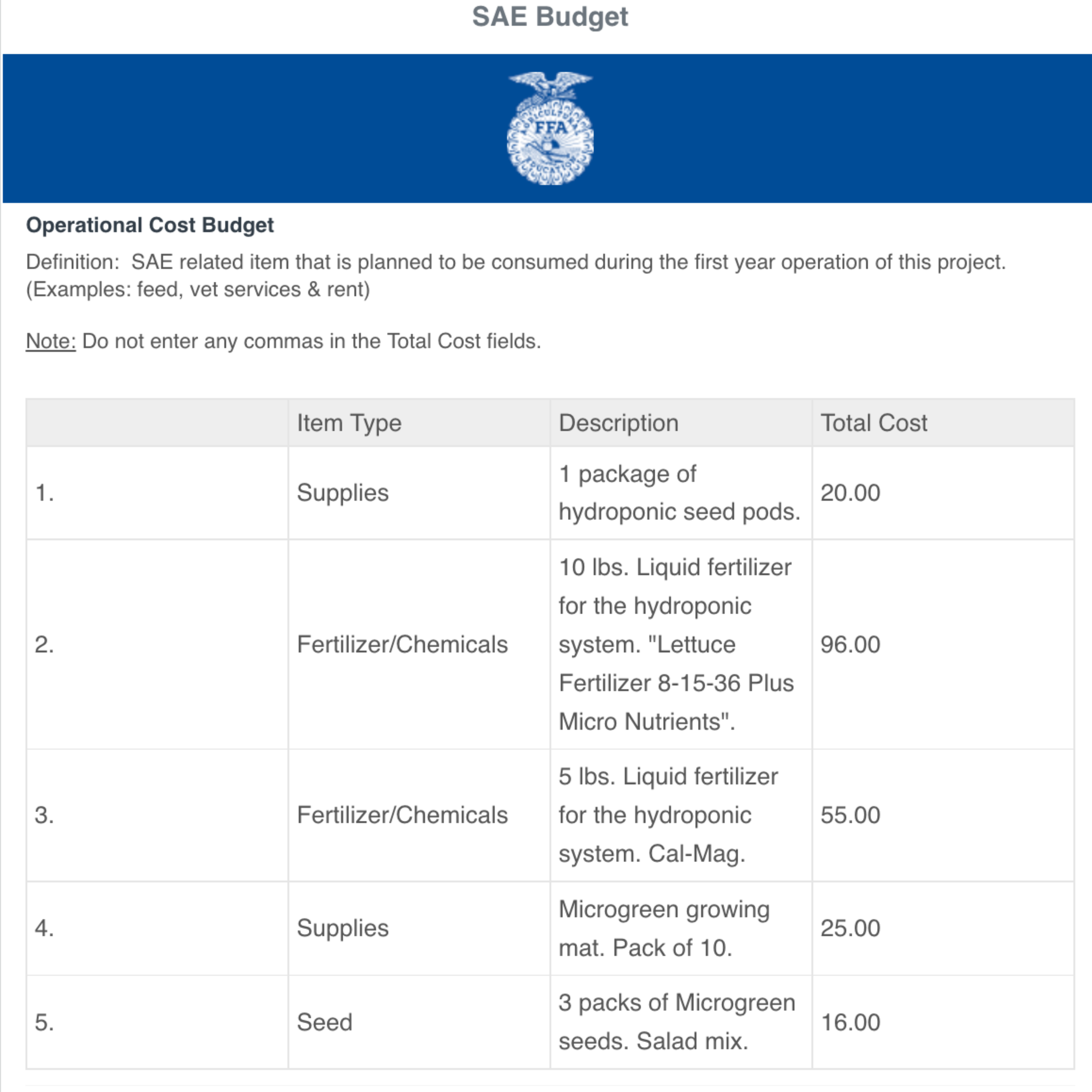
Do your students struggle with determining their SAE?
Vegetable garden. Layer hens. Fair project.
These were the most common SAEs my students initially identified and when I started teaching, I had a hard time directing them to more innovative and higher level SAEs.
One of the best resources I found for getting students to really shoot for the stars within their SAEs were National FFA SAE Grants…and the deadline is coming up on November 15!
National FFA SAE Grants allow students to acquire $1,000 to start or expand their SAE project.
Yes…FREE MONEY!
I found that when it wasn’t students’ own money on the line, they were willing to think outside the box and really capitalize on the potential of Supervised Agricultural Experiences.
Although you are not guaranteed to receive the grant, I have found some surefire ways to achieve a high score on the evaluation that helped my students receive $13,000 worth of SAE grants in my last six years of teaching with six grant recipients in 2021.
Below are a few of my recommendations:
1. Follow the rubric - I know this seems like an obvious recommendation, but National FFA provides you with the rubric…use it. Provide the rubric to the students and follow the directions in the “Excellent” category to ensure you get the most points possible.
2. Students should apply for every grant that applies to them. A list of every grant, the SAE pathway they apply to, the state requirements and the number of grants available are explained.
3. Use numbers to list out the rubric criteria so it is extremely easy for the evaluator to locate the rubric items. Notice in the image below how easy it is to find all four of the rubric criteria.

4. Make sure all goals have a measurable criteria to them, such as a number, currency or percent, and each goal has a date within the grant timeframe. Although two goals are required, I recommend students do three or four to show the evaluator additional information about the students’ SAE. Below is an example:

5. Make sure students’ timelines have an activity each month from February to November and the activities explain the scope of the SAE. Below is an timeline example:

6. Make sure budget items have a number involved with them to make it quantifiable, such as quantity, weight, etc., and the description provides adequate information to the evaluator about what the student is purchasing. The total budget should also equal at least $1,000. Below is an example of the operational cost budget:

7. Students need to indicate how they plan to obtain resources beyond the scope of the grant and the collaborators who will be providing these resources. Even if the student feels like the grant will cover all costs of resources, you need to help the student think of resources that could be included in this section or they will lose 10 points from the evaluator. This is also necessary for the student statement; students need to explain how the grant will benefit them and any limiting circumstances - students financing their SAE is a limiting circumstance.
This section it is also important to use terminology from the rubric when writing the statements.
“This grant will benefit my SAE because…”
“The limiting circumstances involved in this SAE is that I am financing this SAE 100% independent of my parents.”
Below is an example of the budget narrative and the student statement:

8. These suggestions apply to the advisor statement as well. Follow the rubric items to make sure your students receive 10 points in this section.
Although, these recommendations will not guarantee that your students receive a $1,000 SAE grant, they will increase their chances.
For me, these steps helped 13 of my students receive a National FFA SAE Grant with six of them going on to win a State Proficiency Award in Ohio and three of them advancing to the national stage as a National Proficiency Finalist.
Good luck and The Owl’s Nest looks forward to seeing your students succeed in their SAEs!
